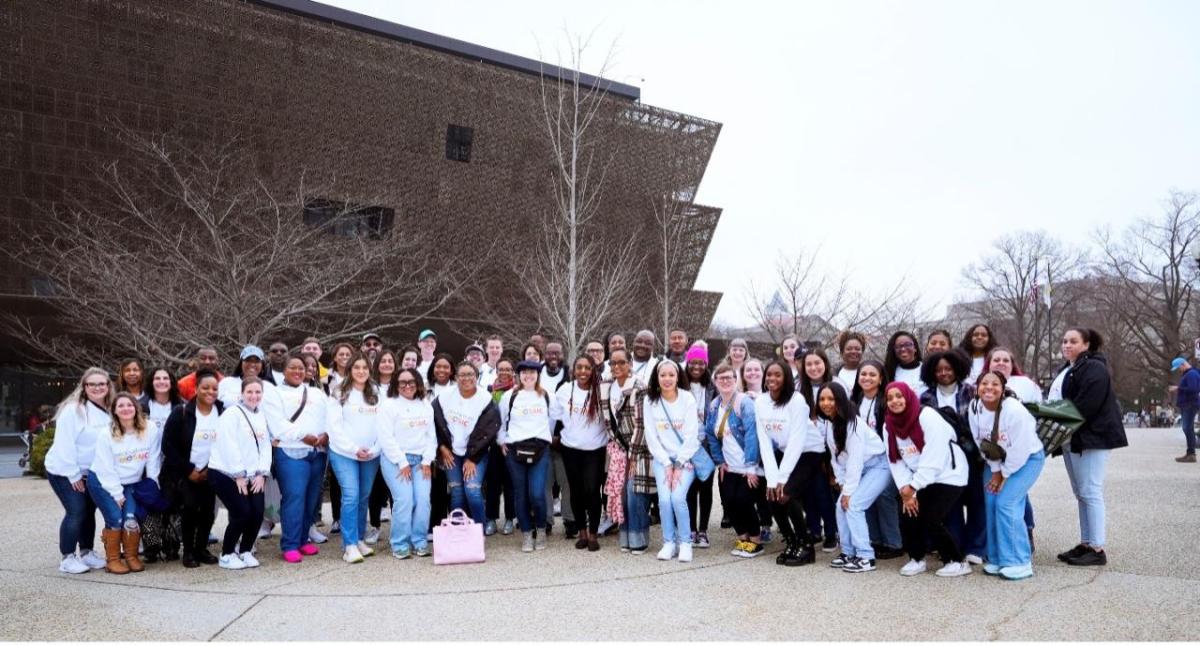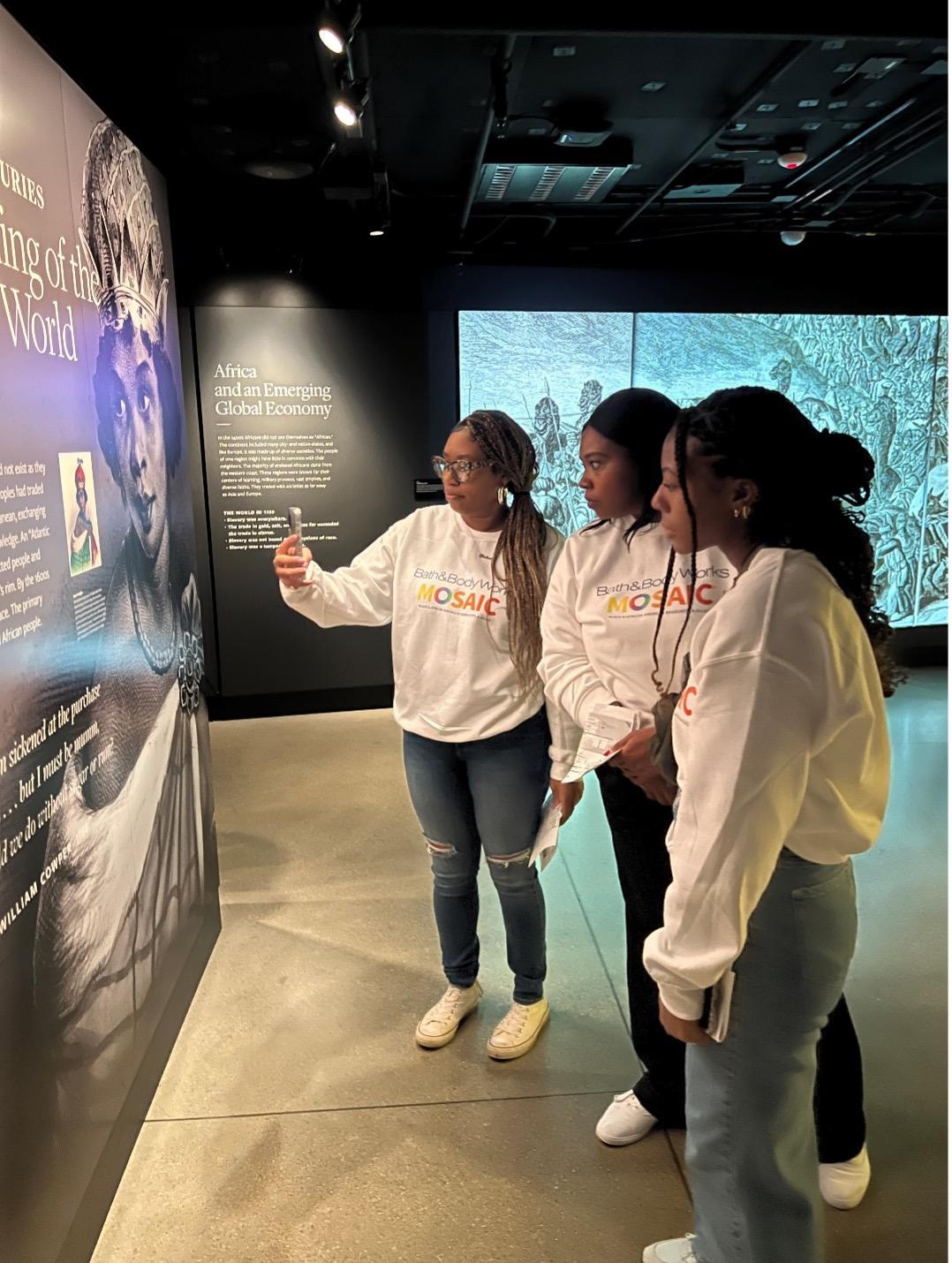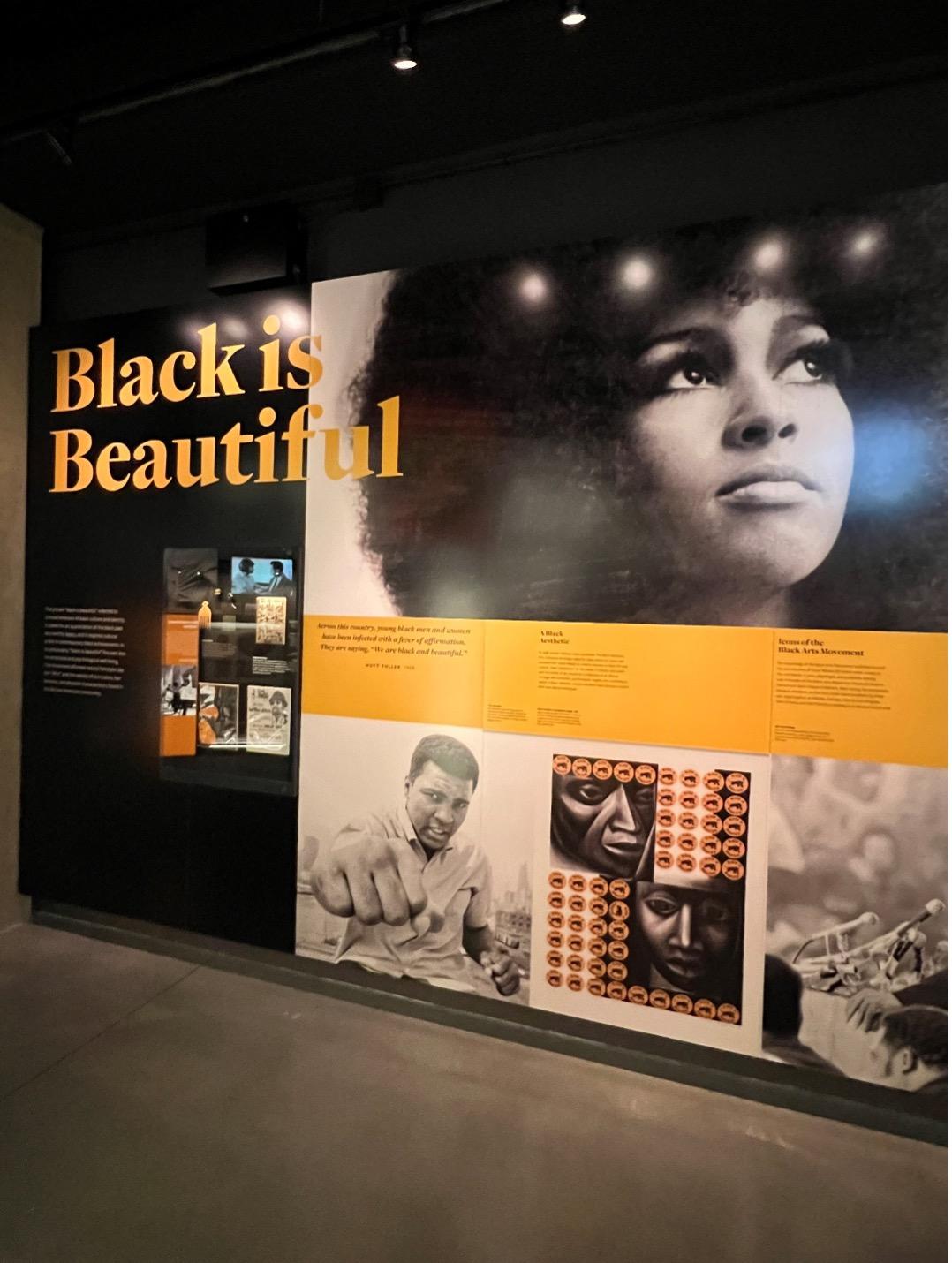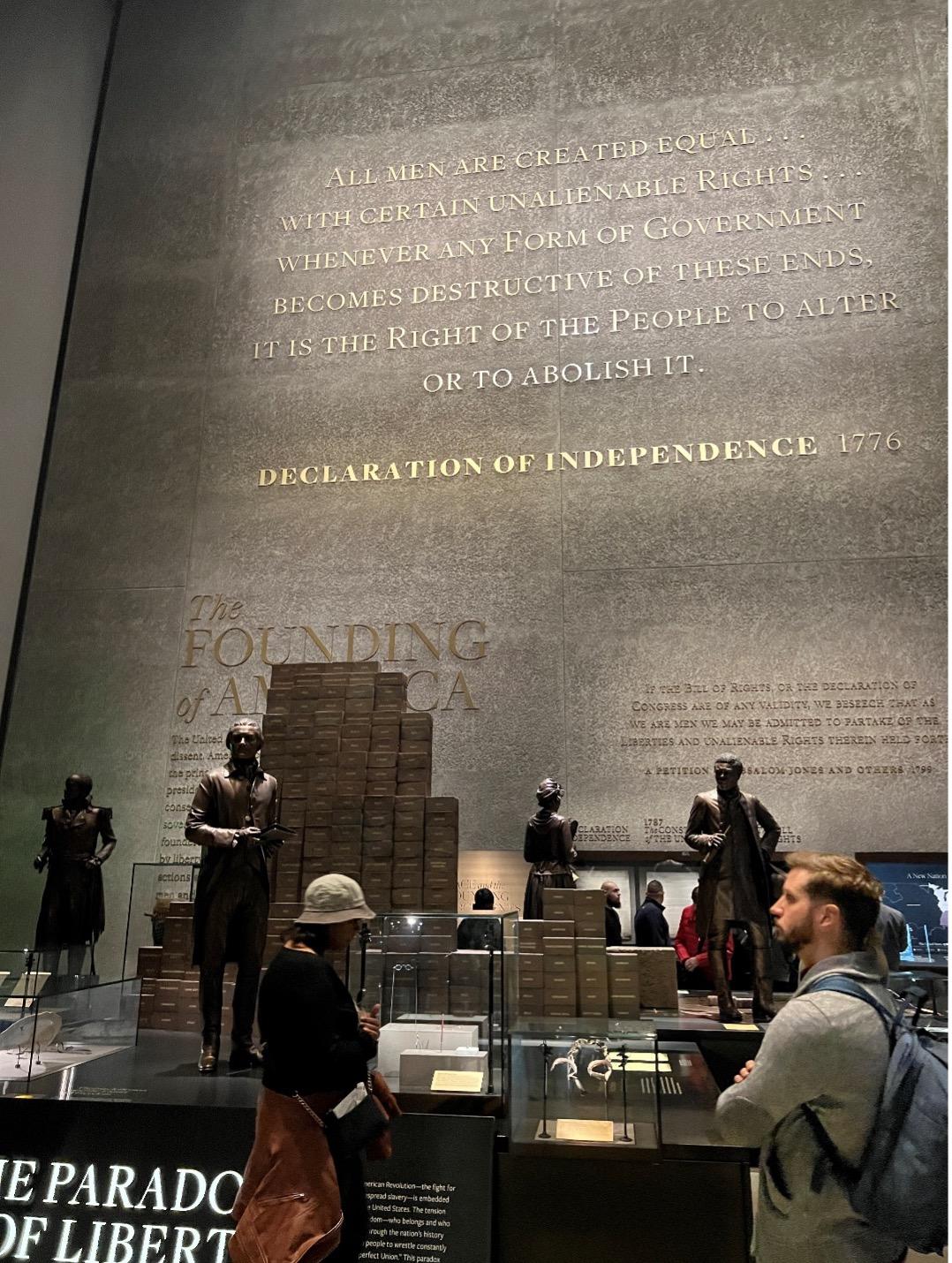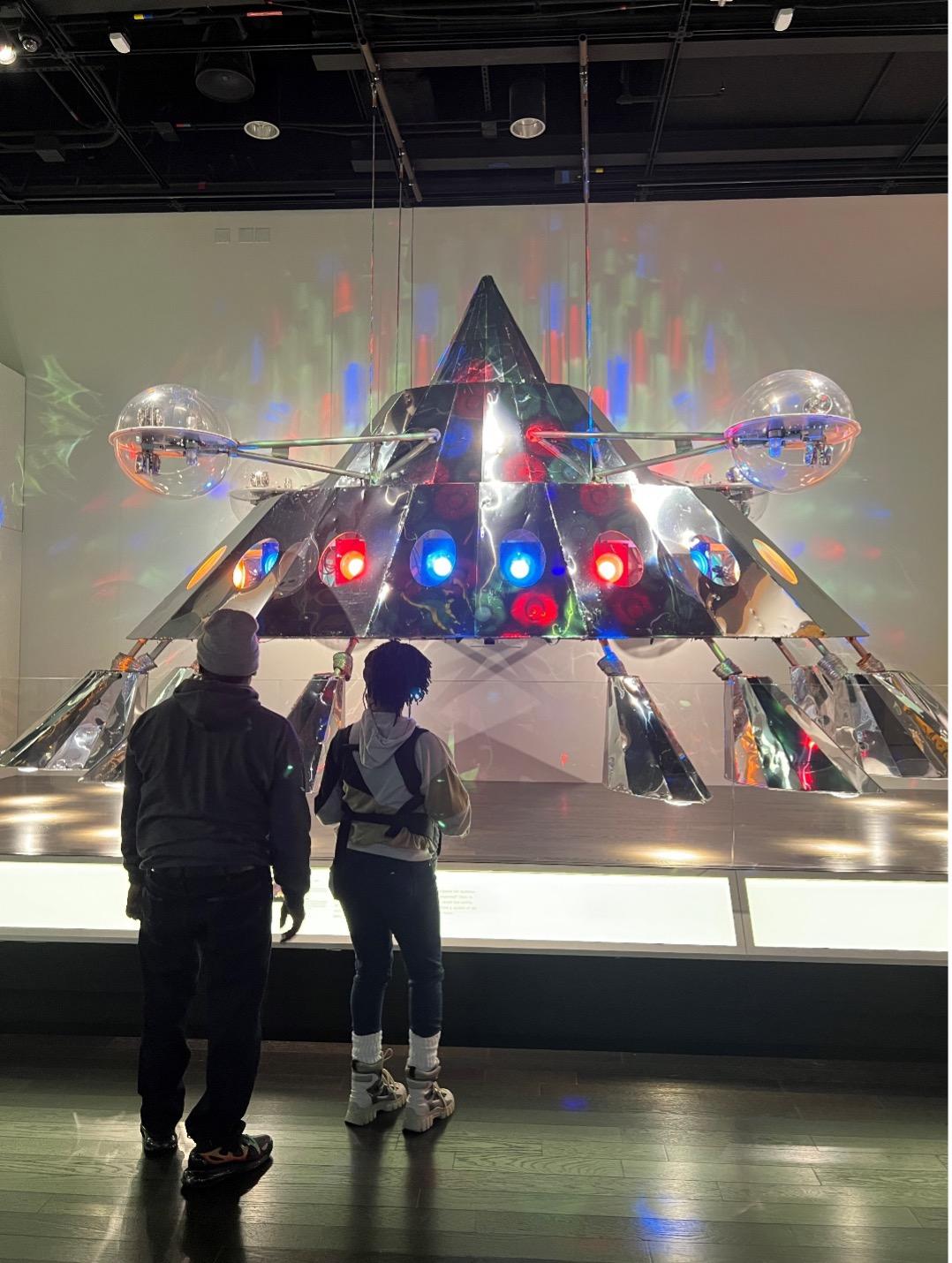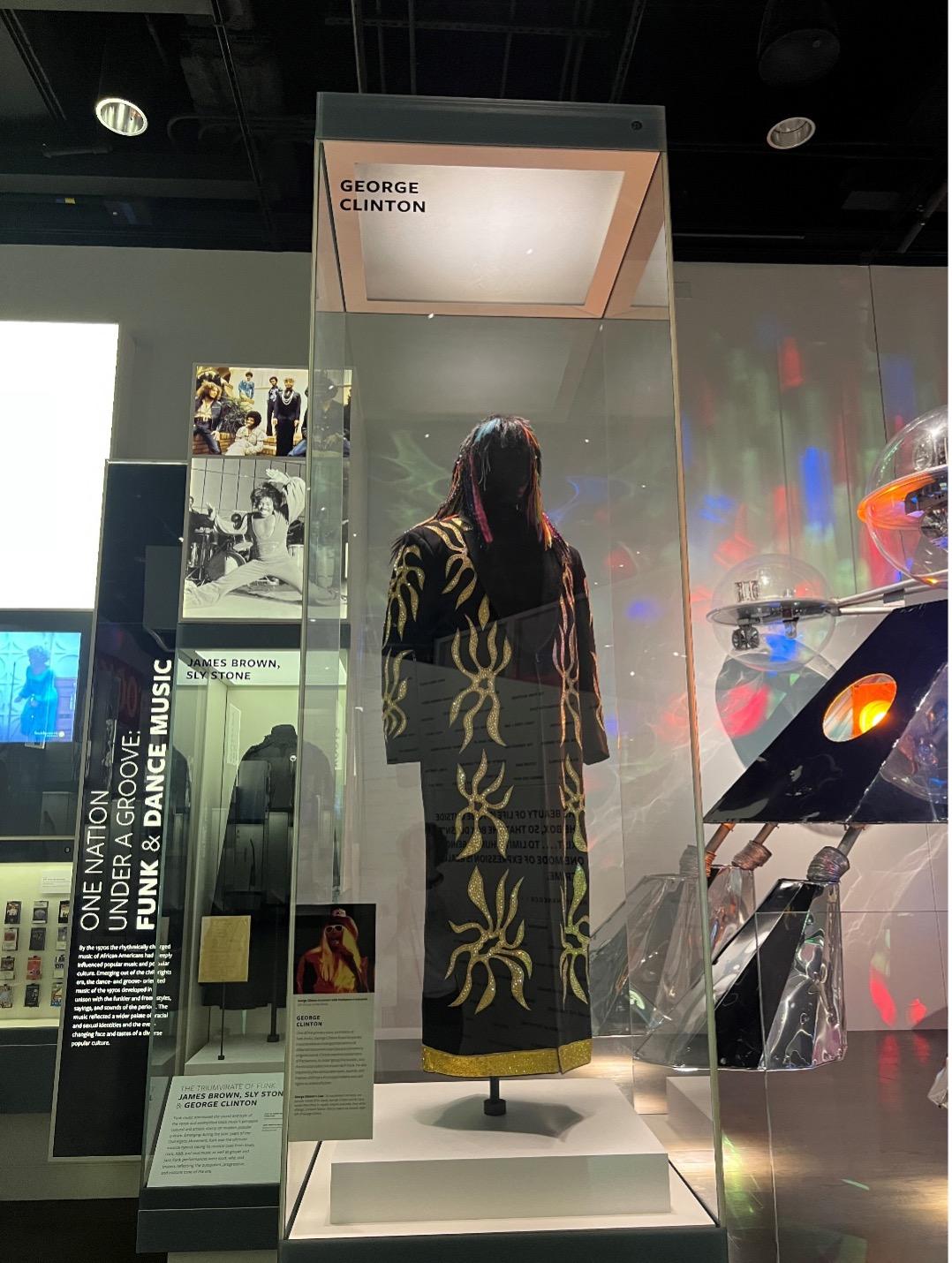Bath & Body Works Explores Black History With Associate Visit to the National Museum of African American History and Culture
In celebration of Black History Month, Bath & Body Works sponsored a special associate visit to the Smithsonian’s National Museum of African American History and Culture in Washington, D.C. Associates traveled from Columbus, Ohio and New York and were met by local D.C. colleagues for a full day of learning and exploration at the 400,000-square-foot museum. Dedicated in 2016, it’s the only national institution devoted exclusively to the documentation of African American life, history and culture.
The visit was coordinated by the brand’s Inclusion Resource Group (IRG) MOSAIC and office of Diversity, Equity and Inclusion. MOSAIC is one of eight Inclusion Resource Groups established by Bath & Body Works which allow associates to connect with one another and to collaborate on ways to cultivate an inclusive workplace. MOSAIC's mission is to help recruit, retain and empower Black associates at Bath & Body Works.
“We see tremendous value in this kind of experiential learning,” says Kelie Charles, Chief Diversity Officer at Bath & Body Works. “Being immersed in history leaves a lasting impression—memories of how something made you feel can be powerful teaching methods. This museum experience is just one of the many ways we’re focused on the growth and development of our teams, and Black History Month was a fitting time for us to come together and learn at such an important national institution.”
When asked about why she participated, store manager Emily Harter said she was excited for the unique learning experience. “It’s an amazing opportunity to get more in depth with Diversity, Equity and Inclusion for not only for myself but my store as well,” says Harter. “I’m excited to expand my knowledge on African American history to be able to teach myself, my family and my team.”
The Bath & Body Works team’s museum journey began 70 feet below ground. Attendees boarded a large elevator and as it descended, the years rolled back—starting in the modern day then downward past important milestones throughout African American history: 2009, when Barack Obama was inaugurated; 1972, when Shirley Chisholm ran as America’s first Black woman presidential candidate; 1963, with the Civil Rights Movement and the March on Washington; 1863 and the issuing of the Emancipation Proclamation; 1619, the arrival of the first enslaved Africans to America, and finally, 1400 and the emergence of the Transatlantic Slave Trade.
When the elevator doors opened, associates stepped into immersive and powerful exhibits which told the story of enslavement, juxtaposed alongside America’s founding and its ideals of freedom and equality. They explored very difficult and often moving topics, including the punishing realities of life on South Carolina rice fields, the fight for recognition and equality for African Americans in the military beginning with the Revolutionary War and beyond; the heroism and fearlessness of Harriet Tubman, and the origins of the Black Power movement.
Thousands of artifacts illustrated African American struggle and oppression alongside stories of resilience, optimism, achievement and hope. While walking through each exhibit, associates advanced forward through time, slowly ascending upwards from the underground into the light.
On the floors above, displays celebrate African American achievements in fields like music, art, sports and the military. One special exhibit titled Afrofuturism: A History of Black Futures showcases how science fiction intersects with Black identity and freedom, and explores themes of possibility and liberation through art and fantasy.
Trailblazing musician George Clinton is featured prominently in the exhibit; his groundbreaking career with the band Parliament Funkadelic imagines a space age world where Black characters are the heroes and leaders of the future.
One of the band’s most iconic stage props, the Mothership, was a centerpiece of Parliament Funkadelic’s live performances and demands the attention of museum goers. Enormous and sparkling, the ship stands at over 20 feet tall and weighs 1200 pounds. It represents deliverance with the power to transport audiences away from oppression into a liberated cosmos.
Each exhibit at the Smithsonian’s National Museum of African American history challenged associates to expand their perspectives and think about how they can make the world a more just and equitable place through the context of history.
“Understanding African American history is vital to our understanding our world today,” says Kelie Charles. “We’re committed to offering rich experiences that bring awareness to and educate our associates on the importance of diversity, equity and inclusion. We will continue to invest in DEI not only because it’s the right thing to do for each other, but because it’s the right thing to do for our business.”

